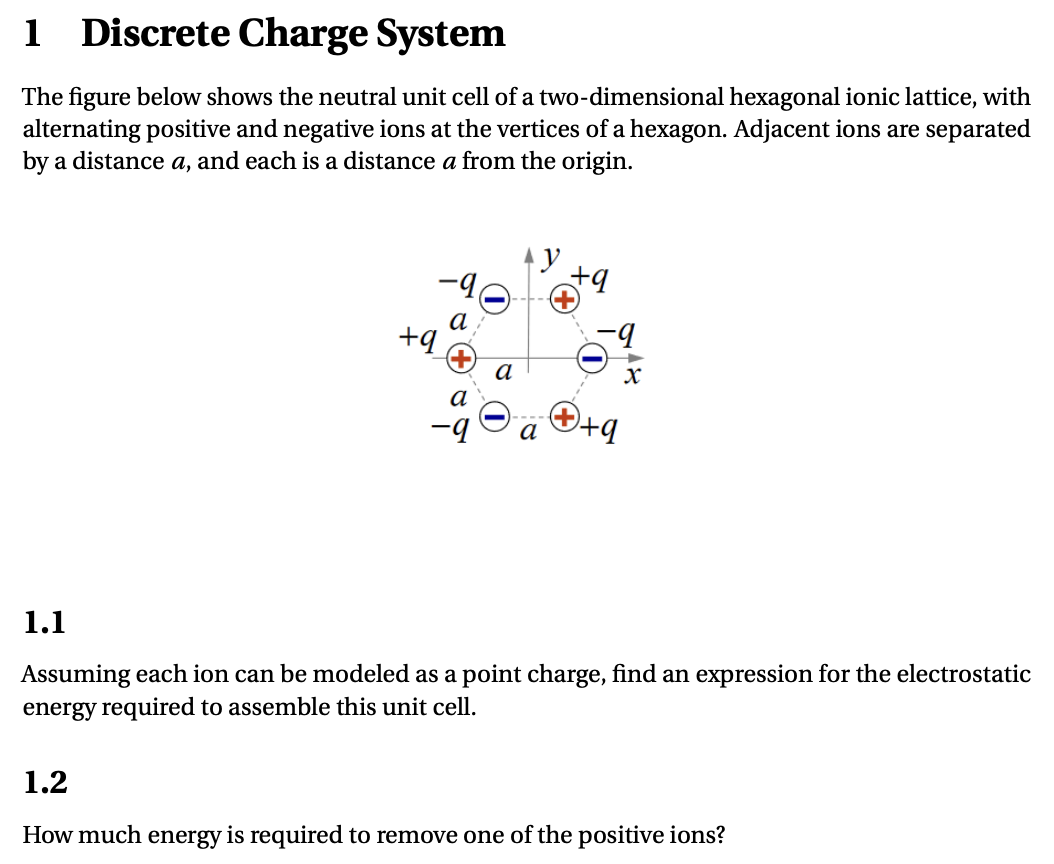1 Discrete Charge System The figure below shows the neutral unit cell of a two-dimensional hexagonal ionic lattice, with alternating positive and negative ions at the vertices of a hexagon. Adjacent ions are separated by a distance a, and each is a distance a from the origin. 1.1 Assuming each ion can be modeled as a point charge, find an expression for the electrostatic energy required to assemble this unit cell. 1.2 How much energy is required to remove one of the positive ions?
